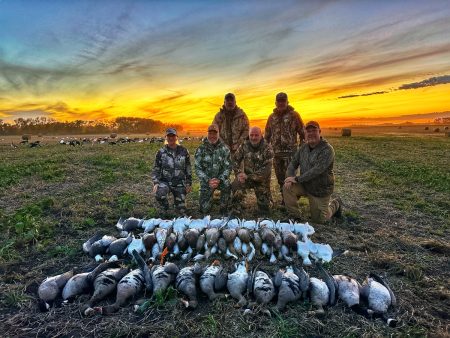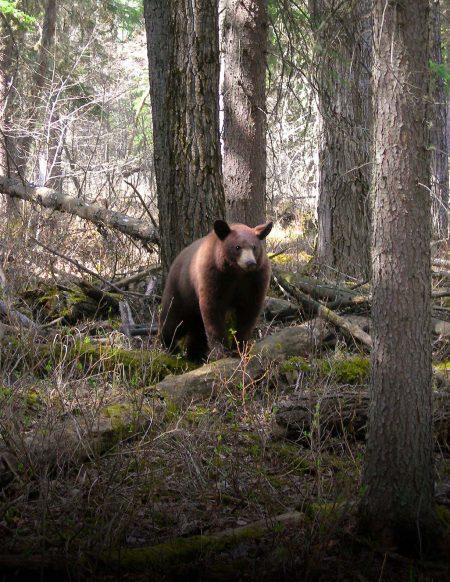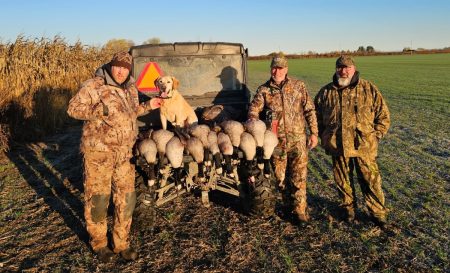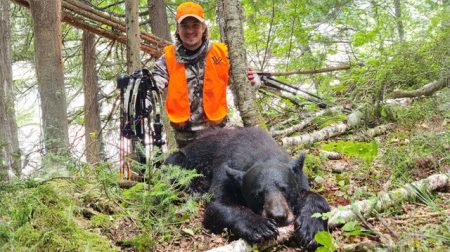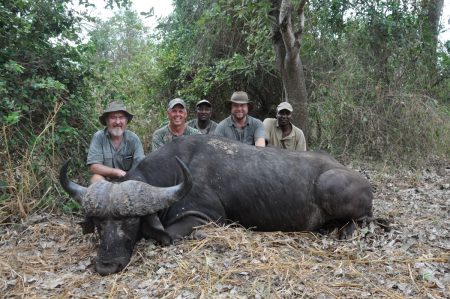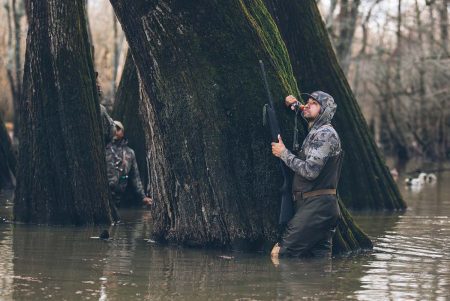Have you ever been locked into trying to take a particular buck, especially an o-l-d, wily Whitetail that has survived at least six or more hunting seasons?
I have! There is nothing easy about it!
I started hunting Whitetails when I was four, sitting in a tree with my dad. By the time I was six, I was sitting by myself in a “deer stand.” (Back then, that meant sitting on a limb in a tree.) My “deer rifle” during those early years was a single-shot .22 Rimfire, back when rimfires were legal for deer. Thankfully, that’s not so today.
As I matured in age and hunting experience, and years before I made my living as an outdoor writer and hunting for the camera, I dearly loved the challenge of going after one particular buck. Most times “that” buck made it through the hunting season unscathed. But some years he ended up in my freezer. During those years I learned a considerable amount about mature Whitetail bucks. Thankfully back then, I got to hunt more than one ranch. I did not lock into a certain buck other than knowing my target needed to be mature (at least five years old or older.) I also took one or two does each fall. So, I knew my young family was not going to go hungry during the winter.
“That Darn Old Eight-Point”
There were several bucks that came to be known as “That Darn Old Eight-Point,” that phrase being about as close as I ever came to naming a buck. Those bucks were occasionally given additional, let’s simply say, “descriptive adjectives!”
One particular hunt occurred when I was taking care of a high-fenced property in Texas Hill Country. To me, this was an ideal research area where I could learn about Whitetails and conduct true biology and habitat research, as well as do the “social research” relative to hunters.
In the northeast portion of the ranch there was a preponderance of bucks that never developed more than six points; main beams, plus brow tines and a G-2 or back tines. On that ranch, we were trying to produce better-than-average Texas Hill Country bucks through proper harvest of does and bucks, supplemental feeding and ever-improving the native habitat. From a nutritional perspective, deer on the property never experienced a “hungry” day.
Yet, in spite of excellent daily nutrition and allowing bucks to mature to be at least five years of age or older, we still had a lot of six-point bucks. To counter, we shot quite a lot of does in that specific six-point area, knowing that does were at least 50 percent responsible for antlers of their male offspring. Obviously, there was a dominant buck in the immediate area that was doing a lot of the breeding.
Finding Sheds
Each winter, once the antlers dropped, we made a concerted effort to find as many sheds as possible. That is how I happened to crawl into a dense thicket I had not previously looked into before. The thicket was 15 feet wide and 40 feet long. That’s where I found four sets of sheds, and none had more than three points per side. They came from successive years, obviously from the same buck. I seriously suspected the buck that had cast them was the one I needed to take out.
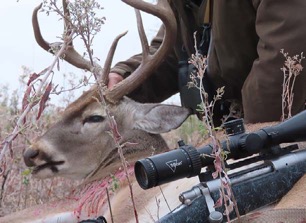
Interestingly, even though several of us hunted the property every day of the hunting season, and we had numerous trail cameras, plus I spent a lot of nights on the ranch with a spotlight—often with our local game warden at my side—we had not seen that buck. It had to be the six-point that was responsible for six-point antlers in that area.
Since it seemed the six-pointer favored the thicket, I waited until a cold, strong North-wind December night. At 3:00 am I crawled into the thicket near the south end. I had just settled in when I heard a deer walk into the thicket and bed a mere six feet away to the north of me. First light came grudgingly. I could see the deer; he was facing north into the wind, away from me. A near lifetime seemed to pass before legal shooting light arrived. When it did, I simply pulled the trigger on the 7×57 Mauser on my lap that was pointed at the buck. My 140-grain Hornady Soft Point bullet traveled merely inches before striking the buck. After that, we seldom saw six-point bucks in that part of the ranch. Lesson learned! Sometimes you have to adapt and try different hunting strategies.
Another Six-Pointer
There was a second six-point buck that I hunted. This one lived on the Hargrove Ranch in the sand and shin oak country bordering Texas’ Double Mountain Fork of the Brazos River on the south end of Texas’ Llano Estacado. Ranch manager Craig Archer and I hunted that particular buck whenever possible. That big buck seemed to know where we were, and what we were going to do, even before we did. We tried every legal and ethical means to take the buck. He continually evaded us and other hunters that Craig had told about him, advising them to look for and hunt that buck.
When I finally shot the six-point, it was in an area he had not been seen in before. I was there looking for a long- tined, extremely massive, wide, typical 10-point. Neither cameras nor hunters nor ranch personnel had ever seen the old six-point on that side of the rather large ranch.
When he stepped out of a shin oak thicket, I knew immediately it was him. He fell to a 150-grain Hornady Precision Hunter ELD-X from my Remington Model 700 Mountain Rifle in .280 Remington. Persistence and being at the right place at the right time had finally paid off…or, well, in this instance, maybe I just got lucky!
I mention these bucks simply to set the stage. Over the years I have hunted several “Darn Old Eight-Point” bucks. In one instance, some ranch hands clued me in to one they had seen several times just north of an area near the Rio Grande River, which separates Texas and Mexico. Try as I might, I could not find him. He was not just a “Darn Old Eight-Point; this one was special. Based on how the vaqueros described his rack, it would likely exceed 160 Boone and Crockett points. They described him as very tall, very wide and massive, but only having eight points.
Other Plans
With only one day left to hunt I decided to forget about that particular buck and go after a really nice typical 12-pointer I spotted during a helicopter game survey that was located close to the banks of the Rio Grande.
I headed toward the bottom of that ranch to spend my last afternoon. Driving south, I spotted three does feeding on lush green growth on the backside of a tank (pond). The rut was still going on although no longer at full blast. Stepping out of my jeep to glass the does, I spotted movement 30 steps to their left. I could see it was a buck. He was mature, with a large neck and shoulders, darkly stained tarsals; he was big-bodied and he had eight tall points.
He moved toward the does, lowered his head, then “airplaned” toward the does. Then he turned to look my way, and I nearly dropped my binoculars. He was 25 inches wide, maybe wider. I reached into my Jeep to grab my 7X57, loaded with 140-grain Hornady soft points. In doing so, my rifle sling got caught on the Jeep’s gear shift. Over the next very anxious minute I pulled so hard on the rifle with the sling hung up on the gear shift that I’m surprised it didn’t break the stock or jerk the transmission out of the Jeep! I gave up on the rifle, remembering that my Contender handgun was laying on the passenger seat. I grabbed the .309 JDJ, loaded with 165-grain Hornady bullets, and followed the buck into the brush. Thankfully, he did not go far. From a solid rest on a dead mesquite trunk, I took a shot. The buck dropped in his tracks.
Back at camp the vaqueros gathered around my buck. He was big, had 26-inch main beams and a 26-inch inside spread. He grossed well over 160 Boone and Crockett points. You’ve got to love those “Darn Old Eight-Points!
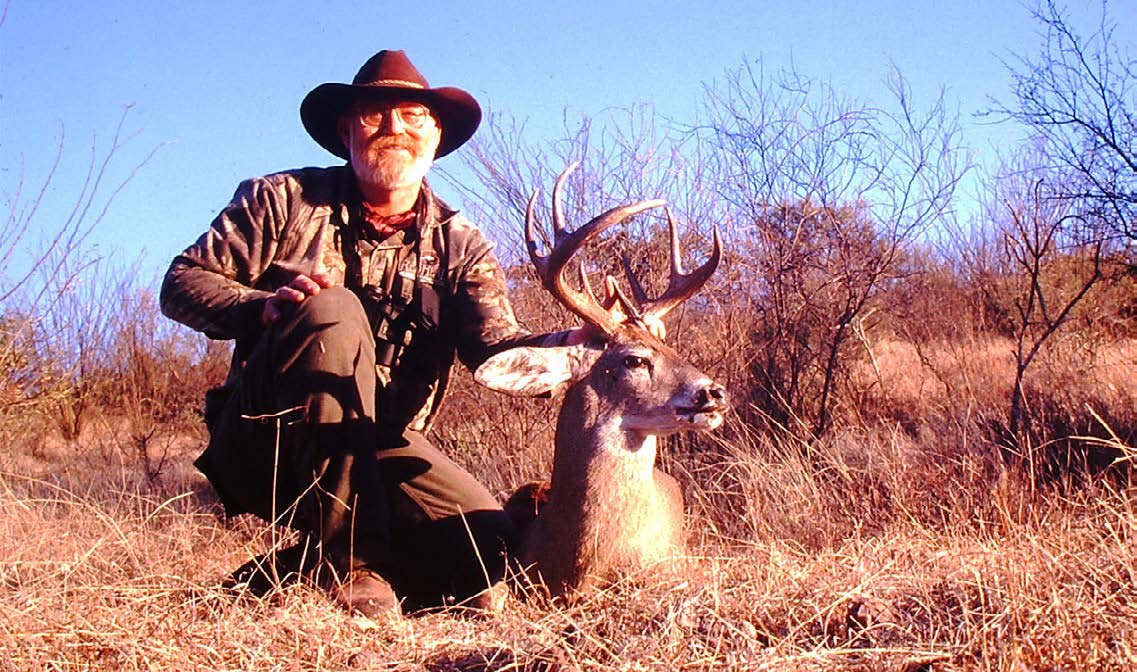
The One True One
These are memorable stories, but there is one true “Darn Old Eight-Point” for me. He lived on a ranch in the South Texas Brush Country 30 miles northeast of Laredo. I had seen him two years in a row during our annual helicopter survey. He was at least five, if not six, years old. While he wasn’t anything special, he obviously had eight points, and he was 18-inches wide with his points upward of eight inches and of decent mass. They key words here being: eight-point and fully mature.
I asked the local vaquero, “have you seen the eight-point I showed you in the picture I took from the helicopter?” The response: “Si, Senor Colorado, he lives in the Bull Trap. I see him every time I drive through to check cattle.”
Excellent, I thought! Now I knew where to start hunting. That afternoon I crawled into one of the two windmill towers in the 2,100-acre pasture. I hoped he would come to water at the overflow pond, just beyond the water trough. If not, perhaps I could see him at a distance, then stalk to within reasonable shooting range. Three days later, I still had not seen that buck. That night I asked him again if he had seen my buck. “Si, Colorado, between the two windmills.” (That was right where I had been hunting.)
Return Trips
I came back a week later and bucks were coming in to rattling horns. I hunted the Bull Pasture and rattled in 32 bucks in the two and half days I hunted, but I did not see my eight-point. Then I asked the ranch hands and they replied that indeed, they had seen him every day I had hunted, pretty much in the same place. Safe to say, I was beginning to not like that “Darn Old Eight-Point” very much.
In just a couple of days, I had to return to being a wildlife biologist. Knowing that baiting is legal in Texas, I scattered a sack of corn where they had seen the buck. For the rest of my hunt, I sat where I could see the bait pile and watch several senderos (cleared paths in thick brush). I saw numerous bucks including a couple I really should have pulled the trigger on. But, they were not “The Darn Old Eight-Point” I was after.
I returned a little over a week later and asked again about my buck. With a smile, the ranch hands explained that they had indeed seen the eight-point every day within a hundred yards of where they had been seeing him all fall.
So, I was nearly at wit’s end. I had tried sitting, watching water and baited areas, rattling and calling, and scents and lures. I had hunted all day and still had not seen the “The Darn Old Eight-Point!”
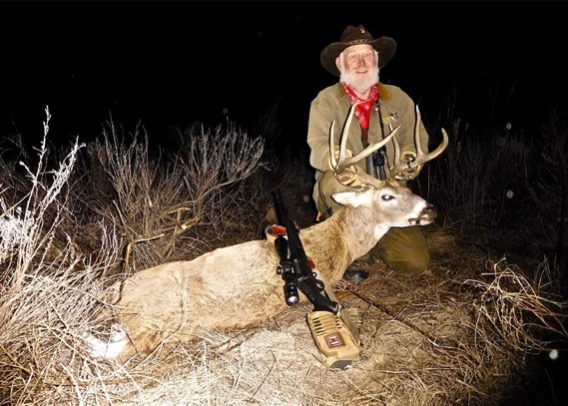
Another Strategy
Mid-morning I decided to walk to another area of the ranch. I love looking for Indian artifacts and this ranch had more than its share of ancient activity. About noon, I crawled into a windmill tower, and I could see a fair amount of “brush country.” It was an unusually still day. Long before I saw Weddo (one of the ranch hands) and his pickup, I could hear him coming. He had the radio on, turned up to the highest volume, and he was singing along at the top of his voice.
A couple hours later I headed to camp to check on things at headquarters. I ran into Weddo and asked him “Weddo, have you seen the puntas ocho macho Viejo? (My Darn Old Eight-Point)”? His response: “Si, Senor Colorado, I have seen him! I drove right up to him. He didn’t even raise his head.”
“Checkmate”
With that, I headed to the ranch’s trash pile, found two five-gallon buckets and some rope and rocks, as well as several pieces of crumpled tin. I threw the tin in the back of my pickup so it could bounce around and make noise not unlike Weddo’s ranch pickup. After throwing a handful of rocks in both buckets, I tied them both on the back bumper, where they would drag.
As I approached the Bull Pasture, I rolled down my windows, tuned my radio to the local Tejano music station, cranked up the volume as high as it would go, and started singing along.
Two hundred yards into the Bull Pasture I drove to within 50 yards of my “Darn Old Eight-Point.” He was feeding, and he never raised his head, not even when I stopped the pickup, singing as loud as I could. I walked a few steps to a nearby mesquite, got a solid rest and squeezed the trigger. Far as I know, the last thing he heard was me singing “Rancho Grande” off-key!
Finally, I had outsmarted “That Darn Old Eight-Point!”
____
Here’s another article you might enjoy: Spot & Stalk Tricks For Archery Whitetail
Per our affiliate disclosure, we may earn revenue from the products available on this page. To learn more about how we test gear, click here.







